|
Question 1. |
|
Darren carried out a series of experiments on a piece of plastic. Here is his report.
I knew the plastic was a solid because it did not change its shape or volume. I put the plastic into a circuit to see if it would make the bulb light but it did not so I knew it did not conduct electricity. When it was put in water it floated so I knew it was less dense than water.
Give three properties of the plastic that Darren tested |
|
Question 2. |
|
Look at these pictures of molecules. which change is taking place? |
|
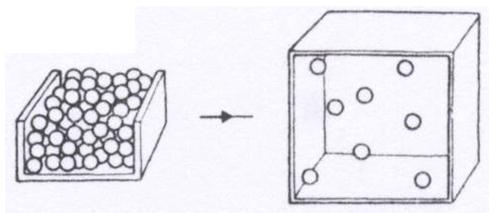 |
| A |
Melting |
| B |
Freezing |
| C |
Evaporating (changing from a liquid to a gas) |
| D |
Condensation (changing from a gas to a liquid) |
|
For questions 3 and 4 choose your answer from the following options. |
|
For Questions 3 and 4, choose your answers from the following options:. |
| A |
they get bigger |
| B |
they get smaller |
| C |
they move faster |
| D |
they move slower |
|
|
|
Question 3. |
|
When water changes into a gas, what happens to the water molecules? |
|
Question 4. |
|
When water changes into ice, what happens to the water molecules? |
|
Question 5. |
|
Saima was reading over her notes for a test but she had some things mixed up |
|
 |
|
Examine the three diagrams above which represent the arrangement of particles in a substance |
| a) |
Copy the appropriate description below to match the arrangements of the particles in each case.
|
|
 |
|
For each of the three diagrams say which represents the arrangement of particles in a |
| b) |
solid |
| c) |
liquid |
| d) |
gas |
|
Question 6. |
|
When Alison added some diluting orange to water she did not mix it. The orange juice was at the bottom of the glass and the water at the top.
She came back an hour later and noticed that the glass was all orange. |
| a) |
In your jotter, draw a diagram to show what happened to the particles in Alison’s drink after one hour. |
|
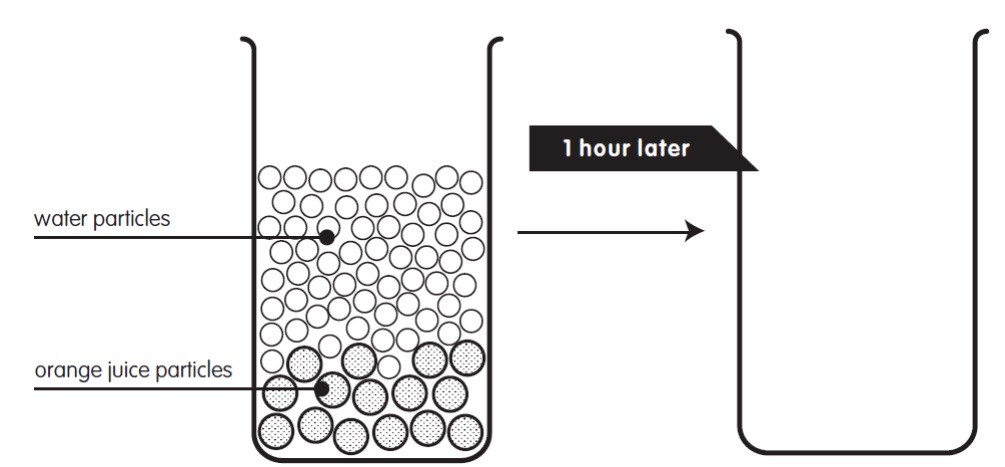 |
 b) b) |
What name is given to the process where particles mix with one another? |
|
Question 7. |
|
Brown gas is poured from a gas jar into a bottle. 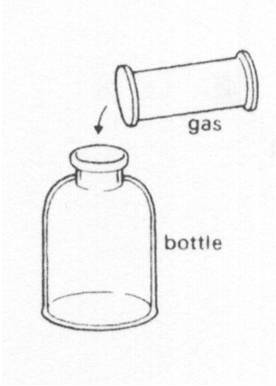 |
|
After a few minutes, the gas |
| A |
has a smaller volume |
| B |
keeps the same shape as the gas jar |
| C |
fills the bottle |
| D |
keeps the same volume as the gas jar |
|
Question 8. |
|
A solid is put into a bottle. 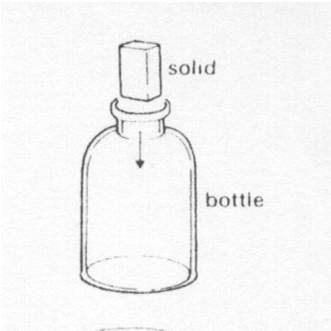 |
|
The solid now |
| A |
fills the bottle |
| B |
has a bigger volume |
| C |
has the same volume |
| D |
has the shape of the bottle |
|
Question 9. |
|
A liquid is poured from a beaker into a bottle. 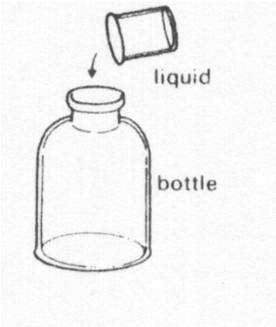 |
|
The liquid now |
| A |
fills the bottle |
| B |
has a bigger volume |
| C |
has the same volume |
| D |
has the shape of the bottle |
|
Question 10. |
|
20 ml of alcohol is poured into 20 ml of water.  |
|
The volume of after mixing could be |
| A |
20 ml |
| B |
39 ml |
| C |
40 ml |
| D |
45 ml |

